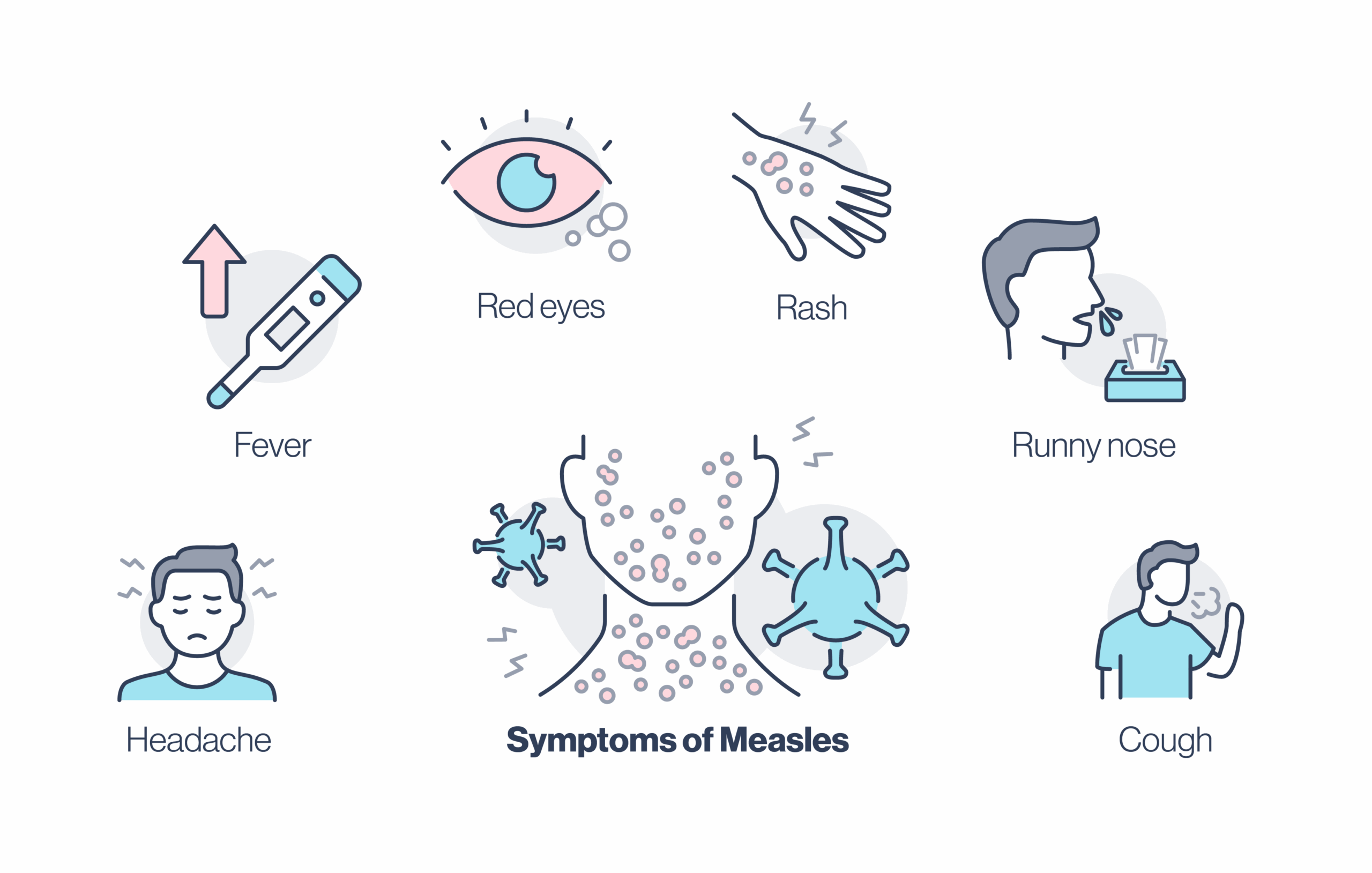A highly contagious but easily preventable virus, measles can have serious health consequences, especially for children younger than 5 years of age. Though declared eliminated in the United States more than 20 years ago thanks to a concerted vaccination program, the disease has resurged in recent years with outbreaks affecting thousands. The Health Observatory at ASU is closely tracking current outbreaks to support state and county health departments in their mission to keep Arizonans safe and healthy.
Disclaimer: Arizona Department of Health Services and Arizona’s respective county and tribal public health departments are the regulatory and advisory authorities on all matters of public health in the state. The Health Observatory supports and augments their mission to protect public health and monitor outbreaks.
How contagious are different diseases?
Measles is highly infectious, even compared to other communicable diseases. It’s so infectious that if 20 people come into contact with the virus, 18 will catch it if they aren’t immune. Comparatively, only two out of 20 people will catch Ebola after contact, or 12 out of 20 people will catch chickenpox after contact.

Critical updates
Measles has the potential to become a more serious threat. See the latest updates about measles to stay informed.
In the Southwestern U.S., CDC-reported measles cases as of the week of Oct. 14, 2025 are: 74 cases in Arizona, 803 in Texas, 100 in New Mexico, 56 in Utah, 22 in California and zero in Nevada. This represents an increase in reported cases in the following states from the previous week:
Arizona: ↑ +23.3%
Utah: ↑ +12.0%
California: ↑ +4.8%
How to protect yourself from measles
The best way to prevent measles is to get vaccinated with two doses of a vaccine against measles, which is usually given as the combination measles, mumps and rubella (MMR) vaccine. Two doses of the MMR vaccine are highly effective in preventing measles.
The Arizona Department of Health Services recommends children get two doses of the MMR vaccine; the first at 12-15 months of age and the second before the start of school at 4-6 years of age.
Risk of measles outbreaks can be determined by vaccination rate and the number of cases. Most states in the U.S. currently enjoy a combination of low cases and medium to high vaccination rates, or at least low vaccination rates but low cases. Other states are not so fortunate, notably Kansas and North Dakota with high measles cases and low vaccination rates, or New Mexico with medium vaccination rates and high cases.
Frequently asked questions
Contact your health care provider immediately if you experience symptoms of measles. Make sure you tell them if you think you were exposed to measles so they can tell you how to avoid spreading it to other patients at the providers office. Measles is a reportable disease in Arizona and requires health care providers and laboratories to report cases. This helps to slow and prevent the spread of infectious diseases.
- Adults can get vaccinated at a federally qualified health center. Find one near you.
- For information about children’s immunizations, contact your child’s health care provider or contact your local public health department.
- ASU students, faculty and staff can schedule an appointment at an ASU Health Services clinic.
The best way to protect anyone from getting measles is to get vaccinated with the MMR vaccine. The Arizona Department of Health Services recommends children get two doses of the MMR vaccine; the first at 12-15 months of age and the second before the start of school at 4-6 years of age. Per the CDC, adults are recommended to get one to two doses of MMR vaccine, depending on their age and risk factors.
Additionally, you can find out what percent of students at your child’s school are vaccinated against measles. If more than 95% of students at the school are vaccinated against measles, it is less likely to have a large outbreak if a student gets infected.
Learn more about the immunization coverage data in your area.
There is no antiviral treatment for measles. Measles is managed with supportive care, which means treating symptoms, such as using medications to lower fever, giving intravenous fluids for diarrhea or giving someone oxygen or helping them to breathe for pneumonia.
If you’re not sure if you’ve had two doses of MMR vaccine, you can ask your health care provider for a blood test (measles titer) to see if you have the antibody to protect you from measles. If you have the antibody present, it means you are immune to measles either from the vaccine or from having measles previously.
You can also just get another dose of MMR vaccine. Per CDC guidelines, there is no harm in getting another dose if you may already be immune to measles, mumps or rubella.
If you were immunized in the state of Arizona, the Arizona Department of Health Services provides immunizations records electronically through MyIR. Register and request your immunization records through the ADHS website.
Risk assessment
Anyone who is not immune to measles either from vaccination or from having the disease is at risk if exposed to someone with measles.
Before the measles vaccine became available in 1963, almost everyone got measles by age 15. As a result, about 48,000 people were hospitalized and about 500 people died every year from measles in the United States. Since its introduction, the MMR vaccine is estimated to have saved thousands of lives in the United States.
Content curated by Dr. Rebecca Sunenshine, Medical Director of Arizona State University’s Health Observatory. Visuals created by Meaghan Batchelor.
Content on these webpages is intended for general knowledge and informational purposes only, and does not constitute medical advice. If you think you have signs or symptoms of measles or been exposed to someone with measles, please see a health care provider.
Want to know more about measles?
Learn more about the history and spread of measles, how herd immunity works and how to protect yourself when traveling.